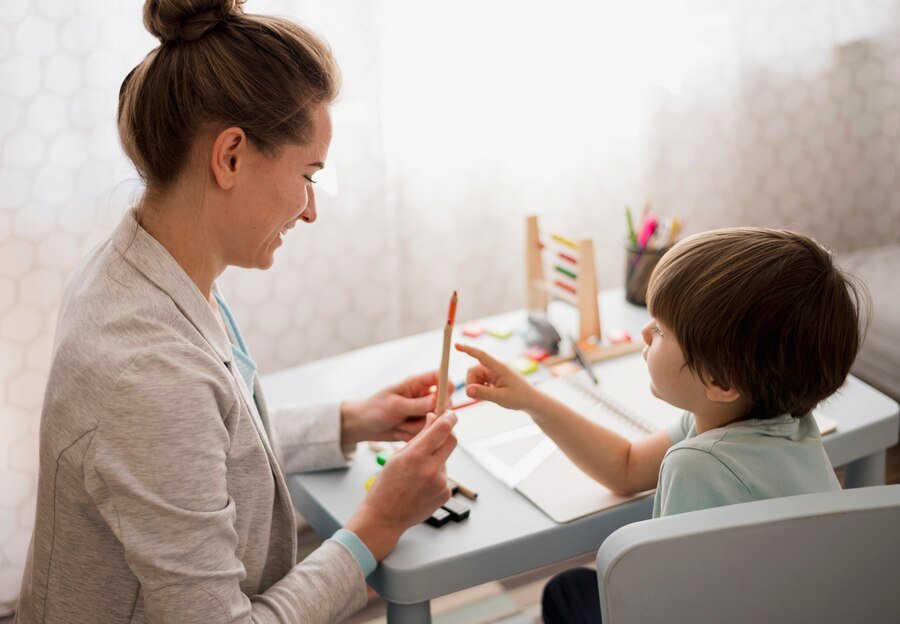Example of an ABA Therapy Session
Applied Behavior Analysis (ABA) therapy is a recognized and effective treatment for individuals with autism spectrum disorder (ASD). It is a scientific approach to understanding and changing behavior and is based on the principles of learning and behavior.
What Is ABA Therapy?
ABA therapy focuses on improving specific behaviors (social skills, communication, learning skills) while also reducing problem behaviors.
It is an individualized treatment, which is tailored to meet the unique needs of each child. It can be implemented in a variety of settings (homes, schools, centers)
The therapy is evidence-based. It is framed by scientific research and has been proven to be effective in helping people with ASD learn new skills and improve their quality of life. ABA develops techniques such as positive reinforcement, prompting and shaping, to teach new skills and encourage positive behaviors.
What Happens During an ABA Therapy Session ?
A highly trained therapist will work one-on-one with the child to implement various techniques and procedures. These involve structured activities, positive reinforcement, prompting, and many others. The therapist will observe the child's behavior and respond in a way that encourages positive change.
Here is an example of 1h approximately ABA therapy session for a child with autism; it involves working on improving communication and social skills. However, the structure and activities would be adjusted based on the child's individual needs, goals, and preferences.
1. Introduction and Transition (10 minutes):
· The therapist welcomes the child and engages in a short, positive interaction to establish rapport (pairing). Self-help skills, such us: jacket and shoes off can be targeted.
· The therapist and child transition from a preferred activity to the structured session.
2. Goal Setting and Review (5 minutes):
· The therapist review child session's goals, which could include verbal communication or engaging in a board game.
· The therapist uses visual aids or spoken language to communicate with the child.
3. Structured Activity (10 minutes):
· The therapist introduces a structured activity, such as a board game or a play scenario with toys.
· The therapist provides clear instructions, model correct behavior, and use prompts to guide the child's.
4. Positive Reinforcement (5 minutes):
· Throughout the activity, the therapist uses positive reinforcement to encourage good behaviors.
· Praise, tokens, or other preferred rewards are provided when the child engages in communication or social interactions.
5. Data Collection (10 minutes):
· The therapist takes notes and collect data to record child's responses, the effectiveness of prompts, and any instances of targeted behaviors.
· The therapist takes notes and collect data on challenging behaviors and behavior management procedures.
6. Transition to Another Activity (5 minutes):
· The therapist facilitates a smooth transition to another activity (ex: table teaching), providing clear expectations for the upcoming task.
· They may use a visual schedule or verbal cues to signal the transition.
7. Generalization (10 minutes):
· The therapist incites the child to generalize newly learned skills to a different context or activity.
· This involves practicing communication skills in a real-life scenario or with a different set of materials.
8. Feedback and Reinforcement (5 minutes):
· The therapist provides positive feedback, reinforcing the child's efforts and progress. It may include edible, tangible, and social reinforcement.
9. Parent Involvement (5 minutes):
· The therapist meets with parents, sharing insights into the session, discussing strategies to apply at home, and providing resources for ongoing support.
This route is replicated and adapted for second hour of the session.
Why Choose ABA Therapy ?
Choosing the right therapy for your child is an important decision. ABA therapy understand the importance of finding the right fit for your child and family and strive to provide the best options your child needs.
The treatment at ABA LEMAN is based on respect, integrity, accountability, and personalization. From early intervention to school-age support, we provide a variety of programs to meet the needs of children at different stages of development. Our therapy programs are designed to target a wide range of skills, including communication, socialization, behavior management, academic skills, and daily living skills.




